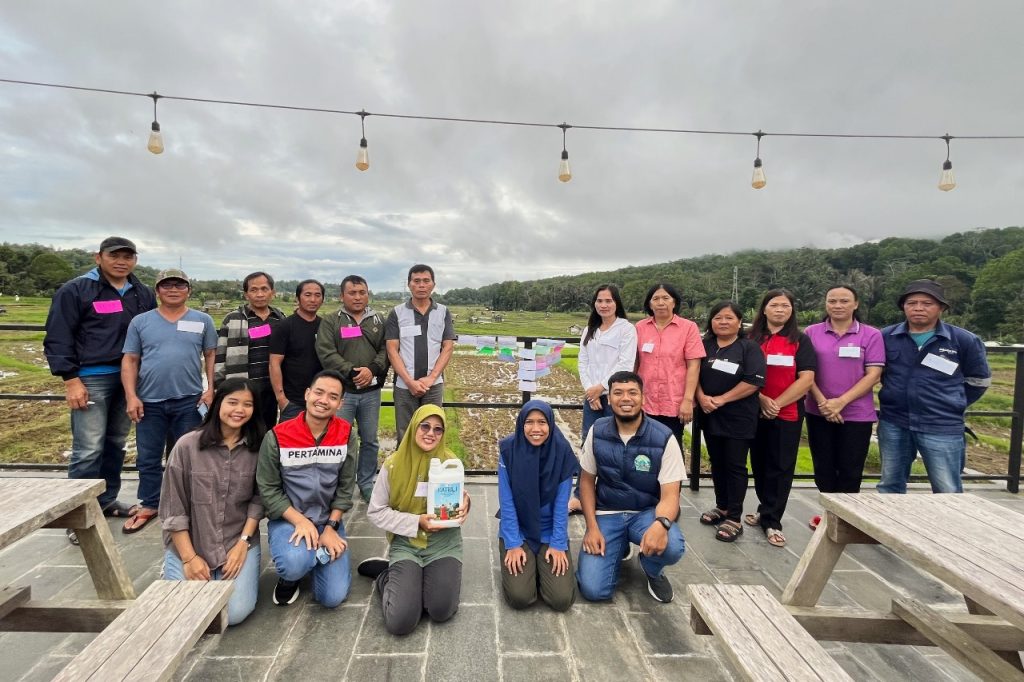Geothermal innovation in Indonesia contributes to sustainable farming
A fertilizer developed by PGE and UGM from silica, a byproduct of geothermal power production in Indonesia, is improving crop quality of local farmers.
While geothermal energy has long been known as a clean electricity source, it turns out that it can also produce by-products with great potential for other sectors—agriculture being one of them. Recognizing this opportunity, PT Pertamina Geothermal Energy Tbk (PGE) (IDX: PGEO) collaborated with Gadjah Mada University (UGM) to process silica—a geothermal by-product—into the Katrili booster, a local innovation that could become a beacon of hope for sustainable agriculture in Indonesia.
“PGE is committed to delivering real benefits to communities, especially those living around our operational areas. In Lahendong, where many residents depend on farming for their livelihoods, we saw an opportunity to optimize geothermal potential into something more impactful. This is what drove our collaboration with UGM in developing the use of silica, a geothermal by-product, into the Katrili booster,” said PGE Lahendong Area General Manager Novi Purwono.
A longstanding collaboration
The partnership between PGE and UGM has been ongoing for years, even before PGE officially became a company and was still known as Pertamina Divis Geothermal (Pertamina Geothermal Division).
The innovation behind the Katrili booster began unintentionally during the Covid-19 pandemic in 2020, when a Geothermal Expert of the UGM Geological Engineering Department, Ir. Pri Utami, M.Sc., Ph.D., IPM, visited PGE’s Geothermal Working Area (WKP) and took samples of geothermal production outputs for laboratory testing. “After analyzing the samples, I found they contained a wealth of materials. Silica was the main one, but there were also many other minerals. Its properties resembled volcanic ash. That’s when I thought, why not turn it into fertilizer?” said Pri Utami.
She later reached out to her colleague from the Faculty of Pharmacy UGM, Dr.rer.nat. Ronny Martien, a nanotechnology expert, to help transform the white silica powder into a plant-friendly booster. After in-depth research and successful development of the Katrili booster, UGM and PGE began engaging farmers using a participatory and voluntary approach. PGE also provided training and support for farmers.

“Katrili booster is new for most farmers because it works differently from the boosters, fertilizers, or pesticides they are used to. That’s why knowledge and skills transfer is crucial for proper and effective use. Like medicine, if used incorrectly, it won’t work as intended,” said Dr. Ngadisih, a soil and water conservation engineer from the Faculty of Agricultural Technology UGM.
Beyond Lahendong, the Katrili booster has also been introduced through UGM students’ Community Service Programs (KKN) in several regions in Java, including Wonosobo and Magelang.
Benefits for farmers
In addition to silica, the Katrili booster contains chitosan derived from shrimp and crab shell waste—chosen for its abundance in Indonesia. Using this waste not only reduces trash but also offers added benefits to crops through its chitosan content. “When combined with silica, chitosan coats the plant surface, making it more resistant to pests and better at retaining water. Meanwhile, silica strengthens the structure of plant cell walls,” said Pri Utami.
Katrili booster is applied by mixing it with water and pouring it directly onto the soil. Dosages vary depending on soil characteristics and crop type. It has been used on various crops, such as Gustavi tomato varieties, batik peanuts, shallots, and rice.
Two farmers from Tonsewer Village, Minahasa—Rommie and Danni—have personally experienced the benefits. They began using the booster in 2024 on their tomato crops. “In terms of quality, the crops treated with Katrili booster were clearly superior to those using only chemical fertilizers. The fruits were larger and more resilient. Ripening was more consistent, with a much lower risk of rotting. The plants also withstood extreme weather better, especially when combined with chemical fertilizers,” said Danni.
Rommie and Danni expressed pride and gratitude for being able to use a booster developed from their homeland. The name Katrili is inspired by a traditional Minahasan dance that symbolizes gratitude and harmony. Rommie said, “We’re very grateful for this PGE program. We hope it continues so that more farmers can benefit from it. After all, the output from our agricultural work helps many others.”
RELATED: Pertamina develops geothermal beyond energy with agricultural byproducts
Source: Email correspondence